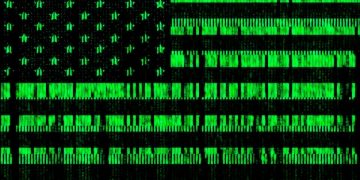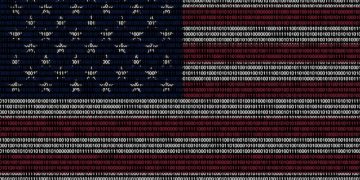Phishing Alert: Protecting US Government Employees from New Scams

A new phishing scheme targeting US government employees is on the rise, using sophisticated tactics to steal sensitive information; learn how to identify these scams and protect yourself and your colleagues.
A critical alert has been issued regarding a new wave of phishing attacks specifically targeting US government employees. This sophisticated scheme aims to steal sensitive data and compromise government systems. It’s vital that all employees understand how to identify and avoid these threats to protect themselves and national security. Let’s delve into the specifics of this phishing scheme.
Understanding the Phishing Threat Landscape
Phishing attacks continue to evolve, becoming increasingly sophisticated and difficult to detect. These attacks prey on human psychology, exploiting trust and urgency to trick individuals into divulging sensitive information. Understanding the current phishing threat landscape is crucial for US government employees.
The Evolution of Phishing Techniques
Phishing attacks have moved beyond simple email scams. Today, they employ a variety of techniques, including spear phishing, whaling, and smishing, to target specific individuals or groups. US government employees are particularly vulnerable due to the sensitive nature of their work.
The Impact of Successful Phishing Attacks
A successful phishing attack can have devastating consequences, ranging from identity theft and financial loss to data breaches and national security threats. Government employees must be aware of the potential impact and take steps to protect themselves and their organizations.
- Recognize the signs: Learn to identify phishing emails, text messages, and phone calls.
- Verify requests: Always verify requests for sensitive information, especially those coming from unfamiliar sources.
- Report suspicious activity: Report any suspected phishing attacks to your IT department or security team.
By understanding the phishing threat landscape, US government employees can better protect themselves and their organizations from these malicious attacks. Staying informed and vigilant is the key to preventing successful phishing attempts.

New Phishing Scheme Targeting US Government Employees
A novel phishing scheme has emerged, specifically targeting US government employees. This scheme exhibits several unique characteristics that make it particularly dangerous. Learning these key details is essential for protecting yourself and other government personnel.
Specific Tactics Used in the New Scheme
This new phishing attack uses a variety of tactics, including spoofing official government email addresses, mimicking legitimate government websites, and using urgent language to pressure recipients into taking immediate action. The emails often contain malicious attachments or links that can compromise their devices.
Identifying the Key Characteristics of the Attack
Several key characteristics can help identify this new phishing scheme. These include misspelled words, grammatical errors, inconsistent branding, and requests for sensitive information via email or unencrypted channels. Always verify the email address and contact information of the sender.
- Check sender’s email address: Verify that the email address matches the official domain of the government agency it claims to be from.
- Beware of urgent requests: Be suspicious of any email that demands immediate action or threatens negative consequences for non-compliance.
- Hover over links: Hover over links to see where they lead before clicking. Do not click on any links that look suspicious or unfamiliar.
By understanding the specific tactics and key characteristics of this new phishing scheme, US government employees can increase their defenses and avoid falling victim to these attacks. Careful attention to detail and a healthy dose of skepticism are critical in detecting phishing attempts.
How to Identify Phishing Emails
Identifying phishing emails is a crucial skill for any internet user, especially for US government employees. Phishing emails are designed to look legitimate, but there are several telltale signs that can help you spot them. Becoming familiar with these indicators is key to protecting yourself.
Red Flags in Phishing Emails
Red flags in phishing emails include poor grammar, misspelled words, generic greetings, and suspicious links. Be wary of emails that ask for personal information, such as passwords, social security numbers, or bank account details. Government agencies will rarely request this information via email.
Analyzing Email Headers and URLs
Examining the email headers and URLs can provide additional clues about the authenticity of the email. Check the “From” and “Reply-To” addresses to see if they match the sender’s claimed identity. Hover over links to see where they are actually going before clicking.
- Examine the “From” address: Look for inconsistencies or misspellings in the email address.
- Check the “Reply-To” address: Make sure the “Reply-To” address matches the sender’s claimed identity.
- Inspect URLs: Hover over links to see the full URL. Look for misspellings, extra characters, or unfamiliar domain names.
By learning to identify these red flags and analyzing email headers and URLs, US government employees can significantly reduce their risk of falling victim to phishing attacks. Always err on the side of caution and report any suspicious emails to your IT department.

Best Practices for Avoiding Phishing Attacks
Adopting best practices for avoiding phishing attacks is essential for protecting yourself and your organization. These practices include being cautious about clicking on links or opening attachments from unknown sources, using strong passwords, and keeping your software up to date. Incorporating these habits into your daily routine can significantly enhance your security posture.
Safe Email and Internet Practices
Practice safe email and internet habits. Avoid clicking on links or downloading attachments from unknown senders. Be wary of emails that ask for personal information. Always use a secure connection when accessing sensitive information online. US government employees should be especially cautious about their online behavior.
Using Multi-Factor Authentication
Enable multi-factor authentication (MFA) whenever possible. MFA adds an extra layer of security to your accounts, making it more difficult for attackers to gain access even if they have your password. Government agencies increasingly require MFA for sensitive systems.
- Enable MFA on all accounts: Use MFA whenever available, especially for email, banking, and social media accounts.
- Use a strong password: Create strong, unique passwords for each of your accounts.
- Keep software updated: Regularly update your operating system, web browser, and security software to patch vulnerabilities.
By following these best practices, US government employees can significantly reduce their risk of falling victim to phishing attacks. Taking proactive steps to protect your information is crucial in today’s threat landscape. A culture of security awareness should be fostered throughout the government workforce.
Reporting Phishing Attempts
Reporting phishing attempts is a crucial step in protecting yourself and your organization. When you report a phishing attempt, you not only help prevent future attacks but also contribute to a more secure environment for everyone. Understanding the proper reporting channels and procedures ensures that your reports are handled effectively.
Who to Contact When You Suspect a Phishing Attack
If you suspect you have received a phishing email, contact your IT department or security team immediately. They will be able to investigate the email and take appropriate action to protect the network. US government employees should also report phishing attacks to the US-CERT.
The Importance of Timely Reporting
Timely reporting of phishing attempts is essential. The sooner a phishing attack is reported, the sooner security teams can take steps to mitigate the damage and prevent further attacks. Prompt action can help protect sensitive information and prevent widespread disruption.
When reporting a phishing attempt, include as much information as possible, such as:
- Sender’s email address: Provide the full email address of the sender.
- Subject line: Include the subject line of the email.
- Email content: Copy and paste the full content of the email into your report.
By reporting phishing attempts promptly and providing detailed information, US government employees can play a critical role in preventing future attacks and protecting government systems. A collective effort to report suspicious activity is essential for maintaining a strong security posture.
Staying Informed About Cybersecurity Threats
Staying informed about cybersecurity threats is an ongoing process. Cyber threats are constantly evolving, so it’s essential to stay up-to-date on the latest scams and security measures. Continuous learning and awareness are vital for protecting yourself and your organization.
Resources for Staying Informed
There are numerous resources available to help you stay informed about cybersecurity threats. These include government websites, industry publications, and security blogs. US government employees should also attend cybersecurity training and workshops to stay current on the latest threats and best practices.
Implementing a Culture of Security Awareness
Creating a culture of security awareness is crucial for any organization. This involves educating employees about cybersecurity threats and implementing policies and procedures to protect sensitive information. Regular training and awareness campaigns can help employees understand the risks and take steps to protect themselves and the organization.
Key strategies for fostering a culture of security awareness include:
- Regular training sessions: Conduct regular training sessions to educate employees about the latest cyber threats and security best practices.
- Phishing simulations: Use phishing simulations to test employees’ awareness and identify areas where they need additional training.
- Security reminders: Send out regular security reminders and tips to keep security top of mind.
By staying informed about cybersecurity threats and implementing a culture of security awareness, US government employees can enhance their defenses and contribute to a more secure environment. Knowledge and vigilance are the cornerstones of effective cybersecurity.
| Key Aspect | Brief Description |
|---|---|
| 🚨 New Phishing Scheme | Targets US government employees with sophisticated techniques. |
| 🧐 Identifying Emails | Look for red flags like poor grammar and suspicious links. |
| 🛡️ Best Practices | Use strong passwords and enable multi-factor authentication. |
| 🚨 Reporting Attempts | Contact your IT and US-CERT immediately to report phishing attacks. |
Frequently Asked Questions (FAQ)
▼
Phishing is a type of cyberattack where criminals attempt to trick individuals into revealing sensitive information, such as usernames, passwords, and credit card details, by disguising themselves as a trustworthy entity in electronic communication.
▼
Government employees are often targeted because they have access to sensitive information and critical systems, making them valuable targets for cybercriminals seeking to steal data or disrupt government operations.
▼
If you accidentally clicked on a phishing link, immediately change your passwords for any accounts you may have entered credentials for, and notify your IT department or security team for further assistance.
▼
Multi-factor authentication adds an extra layer of security by requiring a second form of verification, such as a code sent to your phone, making it more difficult for attackers to access your accounts even if they have your password.
▼
You can find more information about cybersecurity best practices on government websites like the Department of Homeland Security and the Cybersecurity and Infrastructure Security Agency (CISA), as well as reputable cybersecurity blogs and publications.
Conclusion
Protecting US government employees from phishing attacks requires a comprehensive approach that includes education, awareness, and the implementation of robust security measures. By staying informed about the latest threats, adopting best practices, and reporting suspicious activity, government employees can play a vital role in safeguarding national security and protecting sensitive information from cybercriminals.





